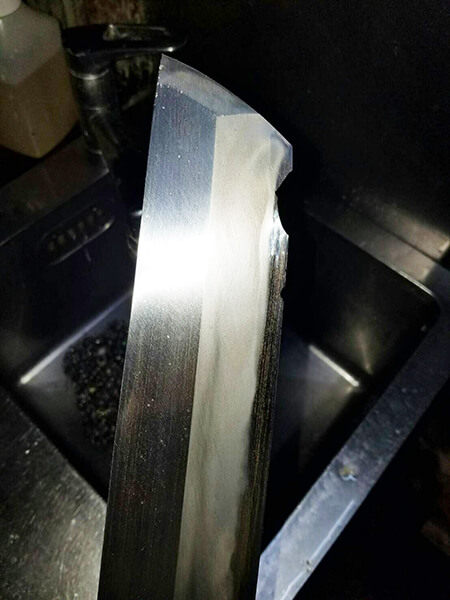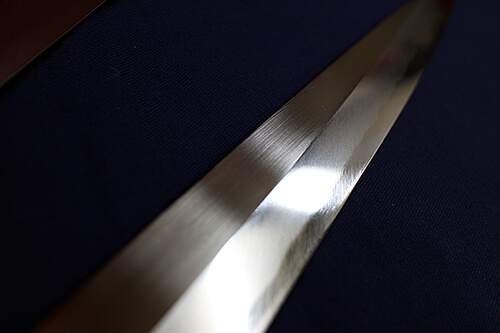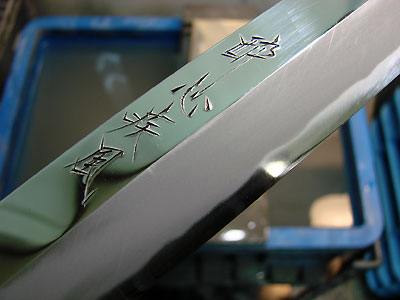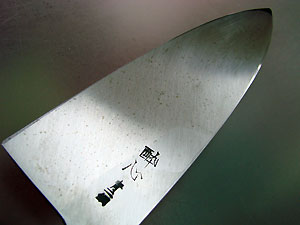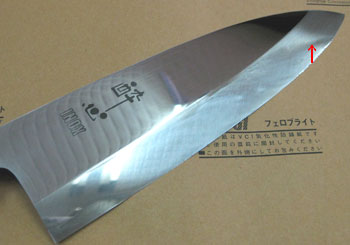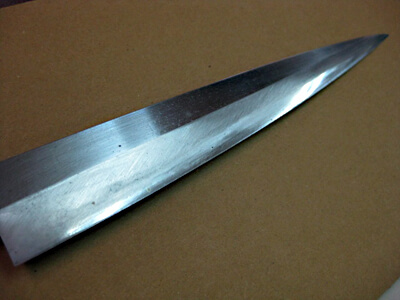Usuba Sharpening
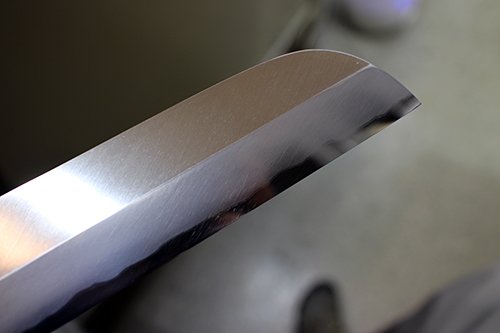
Today, right from the crack of dawn, I embarked on the task of honing the primary edge of the 180mm KamaUsuba White 2 Steel Honkasumi knife.
This happens to be one of the most popular styles of knives in the Honkasumi lineup.
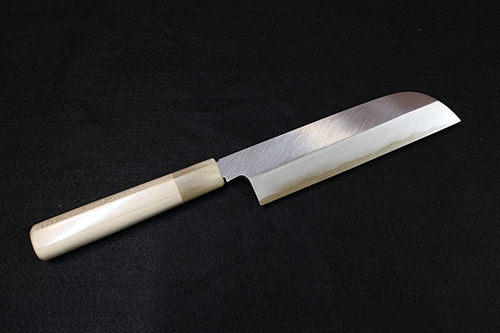
When I mentioned that it’s ‘one of the most popular styles,’ I was referring to knives that taper from the base of the blade toward the tip. In other words, these knives have a thickness that decreases as you move toward the tip. However, if you attempt a flat sharpening technique on this type of knife, it will inevitably lead to a change in its original shape.
By ‘change in shape,’ I mean the width of the cutting edge near the tip becomes narrower, resulting in a trapezoid-like form where the Shinogi line and the edge line are no longer parallel. The reason for this distortion is the difference in the edge angle between the blade base and the blade tip.
Now, you might be thinking, ‘Is there no way to maintain the original shape then?’ Well, if you opt for a flat sharpening method, there’s really not much that can be done. Sometimes, it’s best to just let it be.
To preserve the original shape through sharpening, our ‘Togimiti (HonkasumiPlus)’ or knives with a non-tapered blade design are the way to go! As for this particular knife, I employed some sharpening techniques to address these issues and improve its performance.

I’ve performed the secret technique, the Kassumisshimo finish. You might notice a few tiny blemishes – those are battle scars from my encounter with the Suita stone (><). The blade’s tip had become quite delicate as I approached the finishing stage, so I had to refrain from removing more of those little imperfections… I apologize for that.
For the steel part at the blade’s tip, I employed the #10000 grit stone. Had I been more conservative and used artificial medium grit stones, the mirror-like finish might have been even more pristine… But let’s set aside the superficial allure for now…
Now, the method I used here is all about aligning the Shinogi line and the edge line to perfection. To put it simply, I create an invisible Shinogi line within the cutting edge. Think of it as uniformly sharpening the steel portion and then using the softer iron part to fine-tune.
Getting that steel part to cooperate can be a challenge, but the trick is to match the edge angle near the tip with the angle at the blade base. Since the tip tends to be sharper, that becomes your reference point as you gradually form the edge angle near the base into something just as acute.
This might sound complex in writing, but according to the artisans, it’s more like ‘Sharpen it like this!’ (laughs). They even said, ‘Make sure Tatsuya learns this!’ – hence, this written account. Maybe we should consider a secret DVD on knife sharpening one day (wink, wink).
For this round, I used the #500 diamond stone, a blue Aoto, and a Suita stone for the ultra-fine #10000 finish. As for the secret stone I used for the back bevel, well, that’s a secret (^^)b. I’ll reveal it via email to the lucky owner!
hibishugyo
- 2016-02-25
